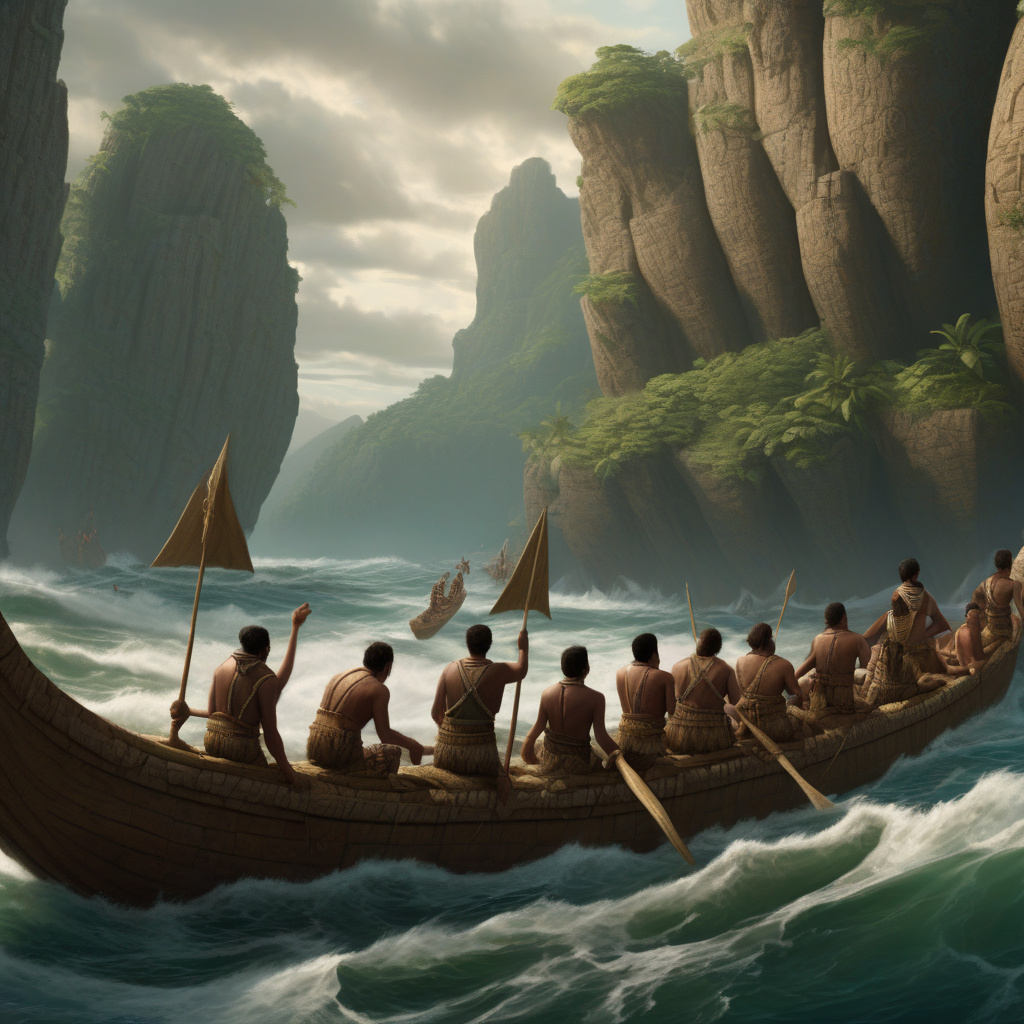30,000-Year-Old Sea Voyage Recreated with Canoe Built Using Ancient Stone Tools
Researchers have explored how early modern humans migrated by sea from Taiwan to southern Japan, recreating a 30,000-year-old sea voyage with a canoe built using ancient stone tools. This groundbreaking experiment sheds light on the incredible seafaring abilities of our ancestors and highlights the ingenuity and resourcefulness of early humans.
The project, led by Professor Akira Ono from Shizuoka University in Japan, aimed to replicate the journey that early modern humans would have taken as they navigated the waters between Taiwan and southern Japan during the Paleolithic period. By using only tools and materials that would have been available to our ancient ancestors, the team set out to demonstrate the feasibility of such a voyage using primitive technology.
The researchers began by crafting a dugout canoe using stone tools similar to those used by early modern humans. The canoe, made from a single cypress log, was hollowed out using stone adzes and axes, a painstaking process that required careful precision and skill. By studying archaeological evidence and experimental archaeology, the team was able to recreate the construction techniques that would have been employed thousands of years ago.
Once the canoe was completed, the team set sail from Taiwan, following the likely route that early seafarers would have taken towards the Ryukyu Islands and eventually southern Japan. The voyage, spanning hundreds of kilometers of open ocean, was a testament to the courage and navigational prowess of our ancestors, who undertook similar journeys tens of thousands of years ago.
The successful recreation of this ancient sea voyage serves as a testament to the remarkable capabilities of early modern humans. It challenges long-held assumptions about the technological sophistication and seafaring abilities of our ancestors, demonstrating that they were capable of undertaking complex maritime migrations using only the most basic tools and materials.
This project also highlights the importance of experimental archaeology in helping us understand and appreciate the achievements of past civilizations. By engaging in hands-on experiments and replicating ancient techniques, researchers can gain valuable insights into the lives and capabilities of early humans, shedding light on their remarkable achievements and contributions to human history.
As we marvel at the incredible feat of recreating a 30,000-year-old sea voyage with primitive technology, we are reminded of the resilience, adaptability, and innovation of our ancestors. Their ability to navigate vast stretches of ocean using nothing but simple tools and raw materials is a testament to the indomitable human spirit and the drive to explore and discover new horizons.
In conclusion, the recreation of this ancient sea voyage serves as a powerful reminder of the ingenuity and resourcefulness of early modern humans. By building a canoe using ancient stone tools and embarking on a journey across the open ocean, researchers have provided a glimpse into the remarkable achievements of our ancestors and the legacy of exploration and discovery that defines our shared human history.
#ancientseafaring, #experimentalarchaeology, #earlyhumans, #ancienttechnology, #maritimevoyage












